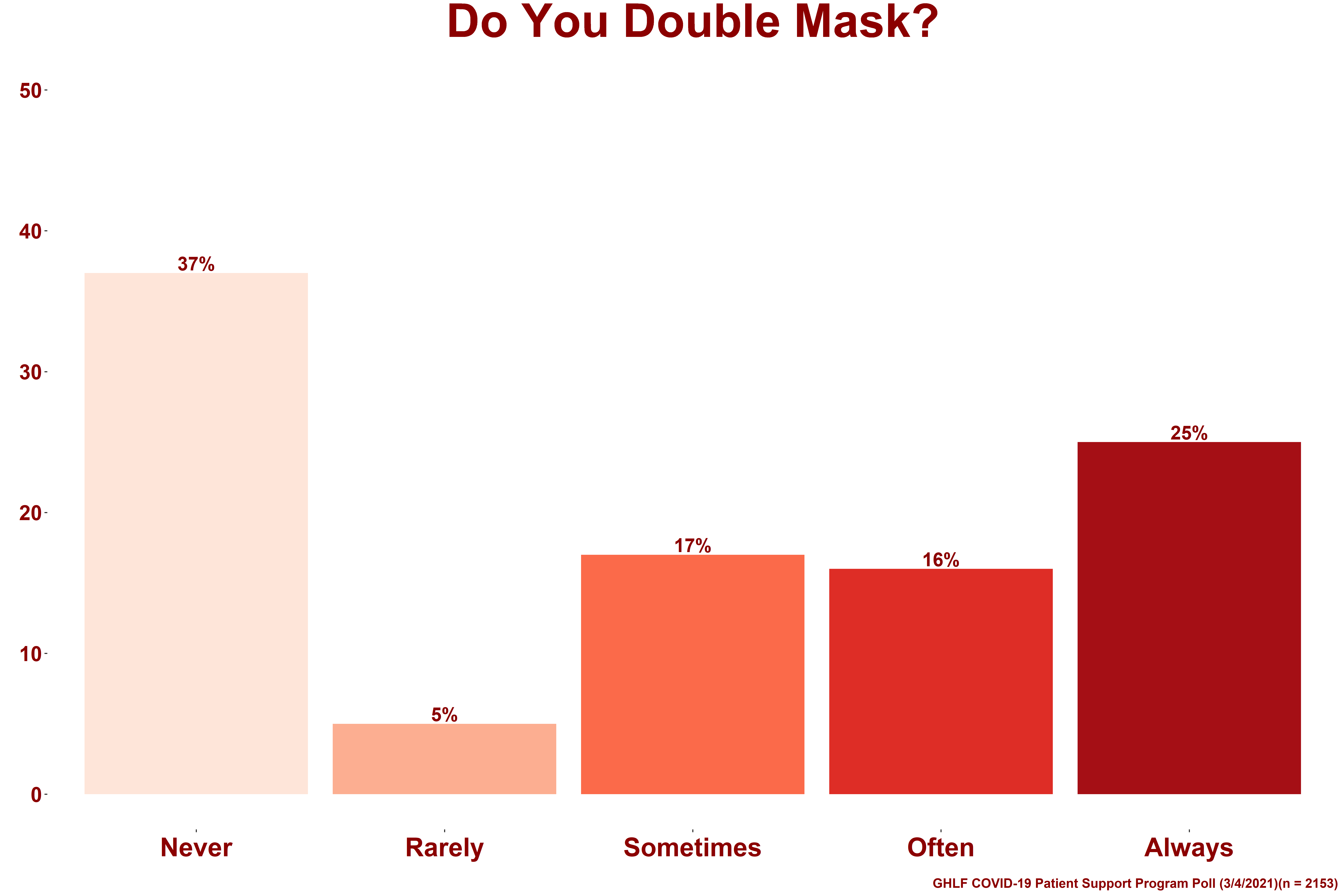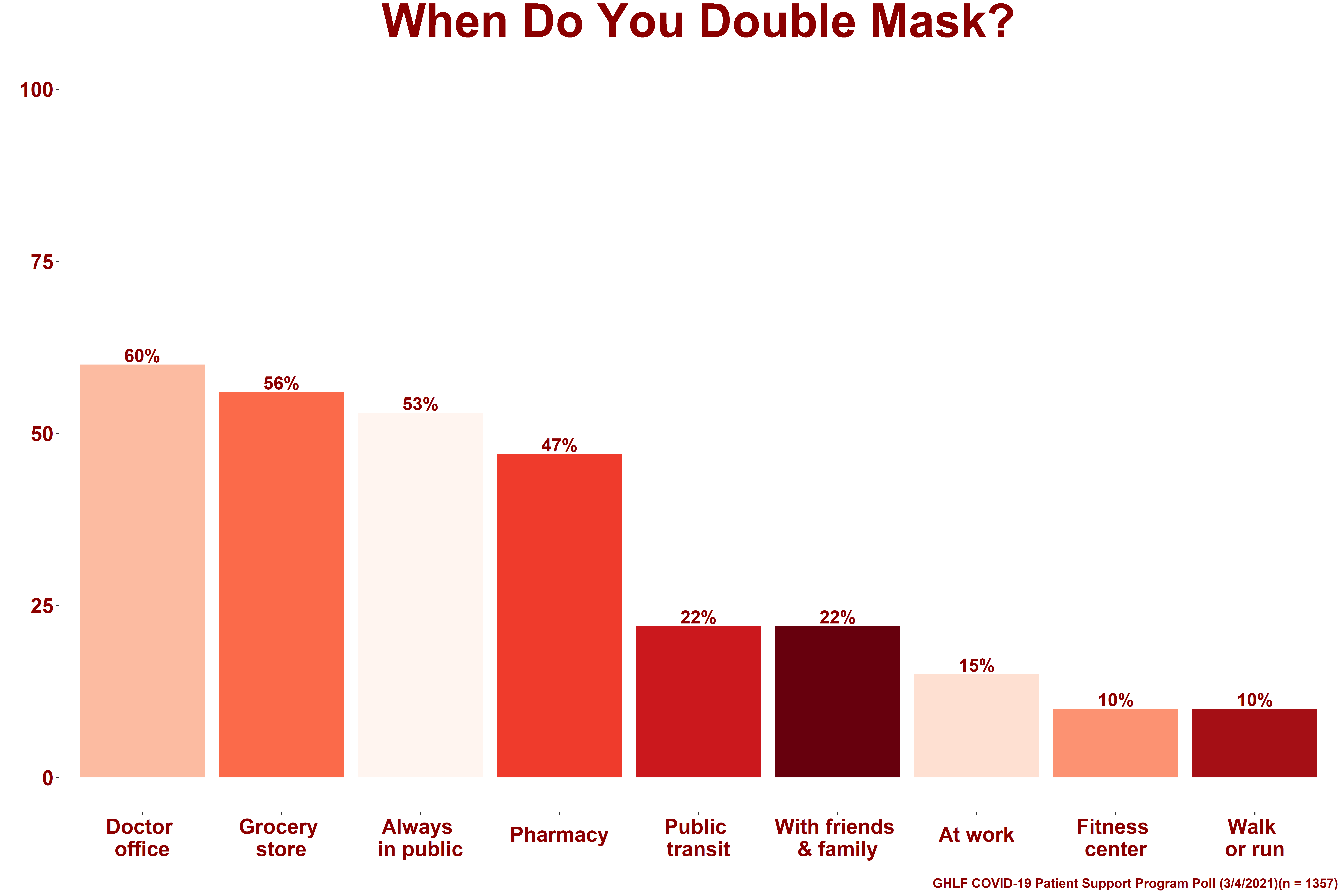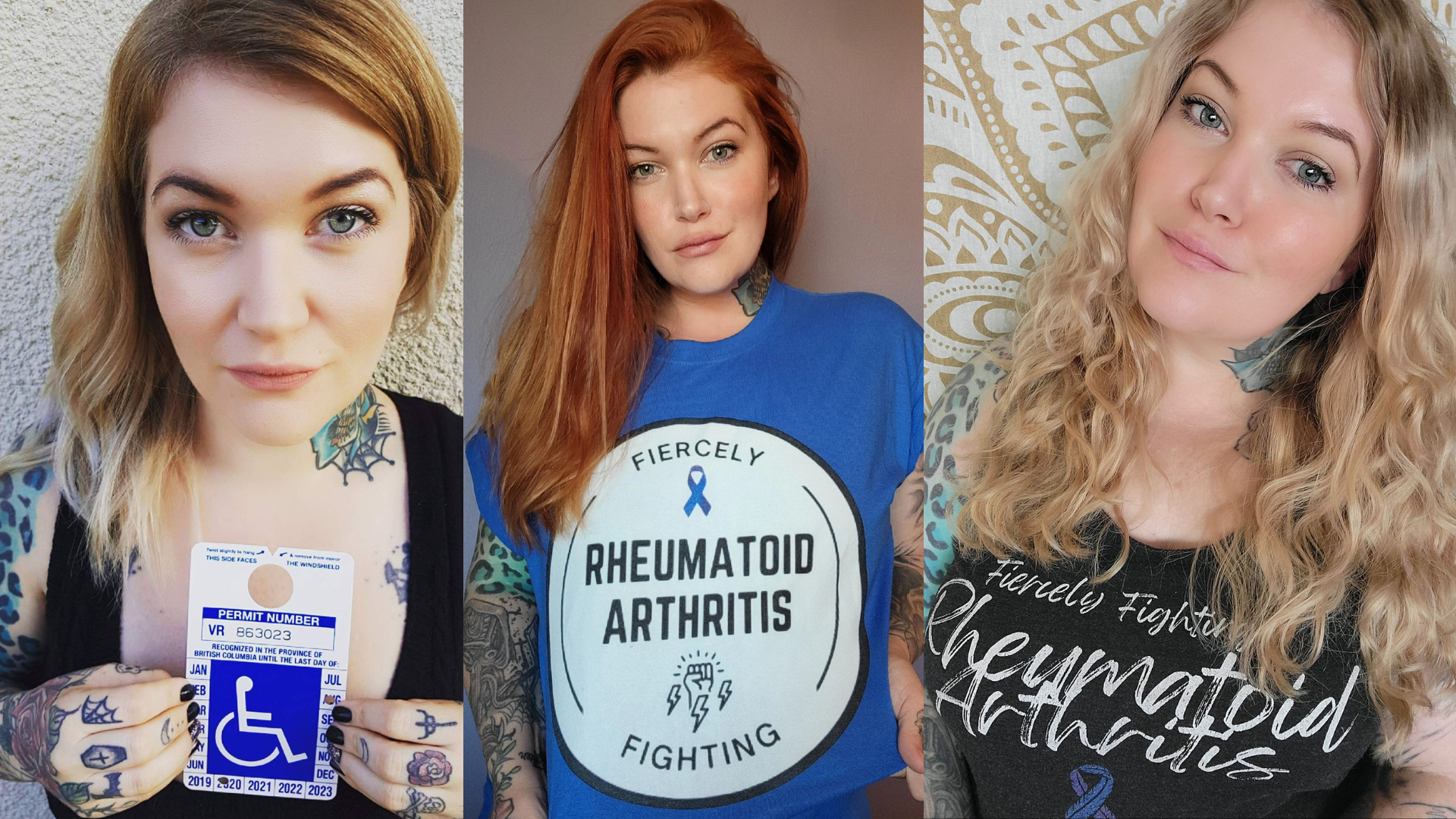Learn more about our FREE COVID-19 Patient Support Program for chronic illness patients and their loved ones.
More people are getting the COVID-19 vaccine by the day, some U.S. states have started lifting pandemic restrictions, and the U.S. Centers for Disease Control and Prevention (CDC) recently issued new recommendations for fully vaccinated people. So that means people can start letting their guards — and masks — down, right?
No. While things are looking more optimistic than they have in some time, the COVID-19 pandemic is still far from over. To keep numbers moving in the right direction means continuing to wear face masks, social distance, and take other precautions. In a recent interview with the Wall Street Journal, CDC Director Rochelle Walensky, MD, emphasized that “when prevention measures like mask mandates are rolled back, cases go up.”
Because of this, the CDC continues to stress the importance of not only wearing a face mask, but ‘double masking’ with a medical and cloth mask for extra protection, given that more contagious strains of the virus continue to emerge and circulate.
Many people with chronic illness seem to be following this recommendation. In a recent survey conducted by the Global Healthy Living Foundation (GHLF) of its COVID-19 Patient Support Program, 63 percent of 2,153 respondents said they double mask in some capacity, while 37 percent of respondents said they never double mask.
The GHLF COVID-19 Patient Support Program a group of people living with medical conditions that make them immunocompromised or high risk for COVID-19 complications. The survey, which was conducted March 4-11, 2021, aims to shed light on the perspective of chronic illness patients during the pandemic.
Here are more insights from the survey data.
Many people double mask; most started doing so recently
Among those who ever double mask (1,357 respondents), here’s how often they report doing so:
- 25% of people always double mask
- 16% of people often double mask
- 17% of people sometimes double mask
When asked when they would double mask, more than half of people (53 percent) said they always do so when they’re outside of the house.
More people said they would double mask in these situations:
- Doctor’s office (60%)
- Grocery store (56%)
- Pharmacy (46%)
Fewer people said they would double mask in these situations:
- On a walk or run (10%)
- At a fitness center (10%)
- With family and friends (22%)
- At work (15%)
- On public transportation (22%)
That said, most double maskers surveyed haven’t been practicing this precaution for the entirety of the pandemic. The majority of double maskers (44 percent) said they only started doing so one to two months ago. Another 22 percent said they started double masking less than a month ago. Only 6 percent said they have been double masking for 12 months or longer.
Among those who don’t double mask, difficulty breathing and discomfort are common reasons
Though the majority of patients surveyed said they double mask, 37 percent of respondents said they do not. Here are some of the common reasons (participants could select more than one answer):
- It’s harder to breathe (41%)
- One mask provides enough protection (32%)
- It’s uncomfortable (16%)
- I wear an N95-style mask in public (12%)
Some 14 percent of patients felt that double masking was not necessary because they were already vaccinated.
Just 6 percent of respondents had not heard about double masking until taking the survey.
Double masking, though uncomfortable, can provide extra protection against COVID-19
Double masking may not be as pleasant, but research suggests it can significantly reduce your exposure to COVID-19.
A February study published in the U.S. Centers for Disease Control and Prevention (CDC) Morbidity and Mortality Weekly Report found that exposure to potentially infectious aerosols dropped by about 95 percent when both the source (an infected person) and receiver (someone standing nearby) wore tightly fitted masks.
Finding a perfectly fitted mask, however, can be a challenge. This is where double masking comes in. When you wear a cloth mask over a medical mask, you push the edges of the disposable mask against your face, creating a more protective barrier, which reduces the spread of coronavirus germs COVID-19.
Will double masking continue to be advised as the pandemic continues? Recommendations may change as we learn more about the impact of coronavirus variants and more people getting vaccinated. For now, it can’t hurt to consider double masking when you will be in higher-risk situations that expose you to a lot of people outside your household, especially where there are crowds or poor ventilation.
Get Free Coronavirus Support for Chronic Illness Patients
Join the Global Healthy Living Foundation’s free COVID-19 Support Program for chronic illness patients and their families. We will be providing updated information, community support, and other resources tailored specifically to your health and safety.
About the Patient Support Program Quick Poll
Members of our program have underlying health issues — such as inflammatory arthritis and other autoimmune conditions, heart disease, lung disease, diabetes, and more — that may increase their risk for COVID-19 complications. They are interested in understanding the best ways to stay safe during the pandemic and to be part of a community of people with similar concerns, questions, and fears.
We regularly poll members, who live in the U.S. as well as around the globe, about a variety of topics, including how the pandemic is affecting their lifestyle, mental health, chronic disease management, medication adherence, and more.
We use this information to inform the educational resources we provide and to inform other stakeholders — such as public health experts, policymakers, advocacy groups, health care professionals, and pharmaceutical companies — about chronic illness patients’ needs and concerns. You can participate in ongoing polls by joining the support program here.
Brooks J, et al. Maximizing Fit for Cloth and Medical Procedure Masks to Improve Performance and Reduce SARS-CoV-2 Transmission and Exposure, 2021. Morbidity and Mortality Weekly Report. February 10, 2021. doi: http://dx.doi.org/10.15585/mmwr.mm7007e1.
West MG. U.S. Should Double Down on Prevention as States Reopen, CDC Chief Says. Wall Street Journal. March 5, 2021. https://www.wsj.com/livecoverage/covid-2021-03-05/card/dzHJV20O8GqKm7MHi3n9.








